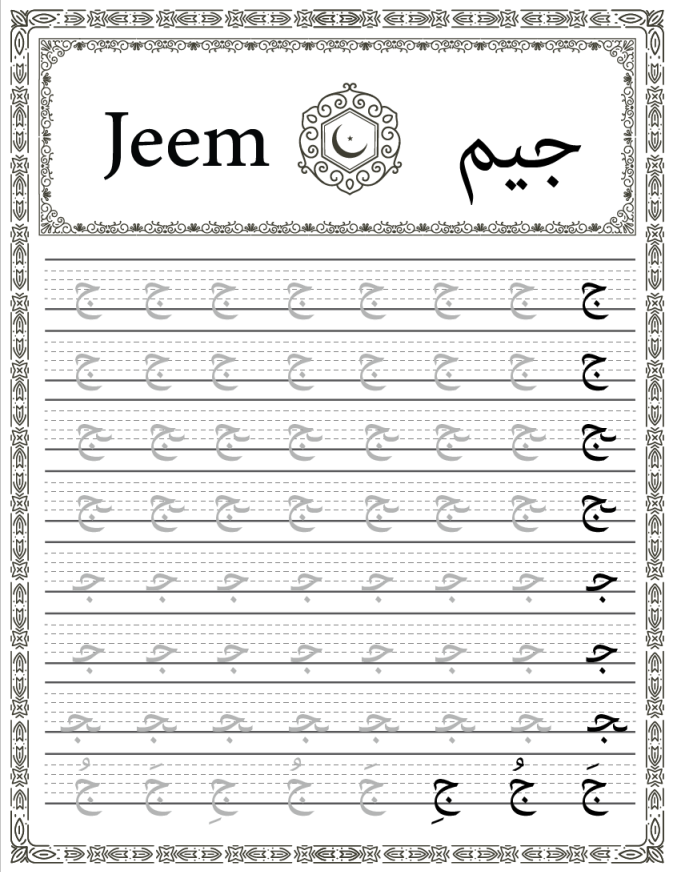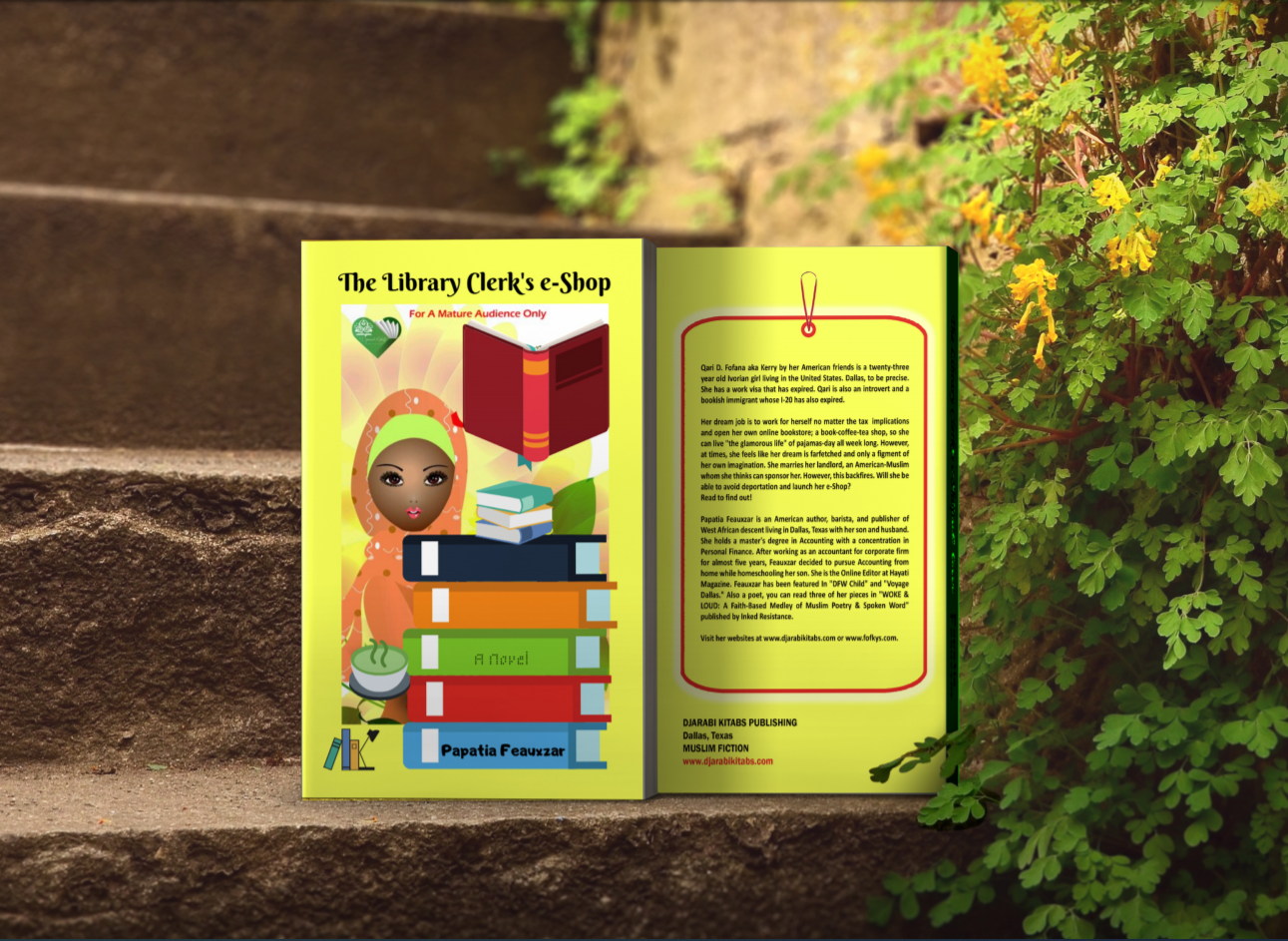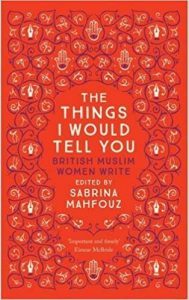Interviewer: Papatia Feauxzar at Fofky’s
Interviewee: Umm Afraz Muhammed
Here With You– An Interview with the Author
Umm Afraz has authored several short books on self-help but today she is at our bookstore to discuss her debut novel Here With You so she can give us some insights on her unique novel masha’Allah. Assalamu aleikum Umm Afraz, welcome to Fofky’s.
Q1 – Can you please give us some insights on the title of your book? Like why Here With You versus something more mothers-in-law related? It’s a romance story so I have some theories but I would love to hear from the mastermind herself.
A1 – Wa alaykumussalaam wa rahmatullahi wa barakaatuh Papatia. Jazakillahu khayran for having me on your blog . It is truly an honor <3. Okay, so I wanted to have a title that had an emotional connection – not only for the characters, but also for the audience. The phrase “here with you” could be understood in a romantic, platonic, parental love, or spiritual sense. It all depends on the context with which it is used.
Q2 – I liked how you portrayed the mother-in-law; she is not a bad person but there was discrepancy between her firm devotion in worship and her application of Islamic or courtesy sunnah manners towards her daughter-in-law. It portrays that many people with whom we don’t agree aren’t necessarily evil but simply imperfect Muslims. I found it relatable and realistic. Did you find emotionally easy or hard to pen her character based on your experience in marriage or scenarios you’ve witnessed in real life from people around you?
A2 – You are bang on! That was exactly how I wanted to portray Fatima. She is just like everyone else – trying to practice Islam whilst struggling with her humanly flaws – an imperfect Muslim. I think that is why she was fairly easy to characterize. She is someone we could all relate to.
Q3 – Aunties everywhere are inappropriate and especially during nikahrelated events where their intimacy innuendos are often raunchy. Have you ever witnessed them to relent? Now, it’s safe to say that sometimes they relay valuable info to the bride to take to the bedroom at times. And poor brides like Salma are usually left to their verbal claws. Do you think such customs should stop or do you think Aunties should carry on because it makes nikahrelated events fun?
A3 – You know, when you think back, it seems funny. But when you are in that spot, undergoing that experience or even when you are in the environment listening to the comments and innuendos, it gets uncomfortable. I believe there should be a balance in joking. It is possible to make a joke while maintaining the dignity of the couple. And if there is any information to be given, it should be done in private. Wa Allahu Alam.
Q4 – Financial security, which is necessary as Islam is about the middle path, pushes many of our parents to steer us towards STEM fields. It has advantages and Disadvantages. Faisal was conflicted with such decisions made for him by his parents. I believe in getting a degree that will support your true passion later. But do you think that one can live off unpredictable art revenues without getting a formal education which can be a safety net?
A5 – We were raised to believe only STEM fields generate income, and arts/humanities field don’t produce as much. I agree a formal education would give the CV a boost, but I also believe that with the way the modern-world is proceeding, as long as you have the passion and you invest your time and efforts in it by continuous learning, and practicing what you are good at, you will earn enough. After all, rizq comes from Allah, and what is meant for you will never leave you unless Allah Wills it. In the end, it is all about practicing yourself and trusting Allah. What are your thoughts?
Papatia Feauxzar : I agree. At the end of the day, it’s about rizq. Masha’Allah.
Q5 – Do you have any questions for me about your book?
A5 – I would love to know what you thought about the story, the writing style, and any critical feedback that you have. Also, what is one scene that you felt closely connected to, and why?
Papatia Feauxzar : The writing style fits the genre of this book; smooth, sensual and emotional. If you had written an adventure book or sci-fi book like this, it wouldn’t have worked because these genres require fast-paced storytelling to keep the reader excited and tuned-in.
Now, I only found very few things (subjective by the way) to be unsatisfied about. For instance, I felt tremendously teased with the sultry romance of Faisal and Salma. I loved them both and the way he stood up for her when it came to his mother meddling. That was very relatable, alhamdullilah. That’s all.
Papatia Feauxzar : Umm Afraz, thank you for being with us.
Umm Afraz : Thank you Fofky’s! Much love, and God Bless <3!
Papatia Feauxzar : Aameen, likewise! Check out a review and a reading of Here With You below, thanks!
Summary:
Salma, a new bride who is happily married to her husband, moves into her in-laws’ house as part of their South Indian culture. A new life, a new beginning, and a new family in a new country. Staying in a place far away from her loved ones, with no one to rely on but her husband, she undergoes the realities of life living under the same roof as her mother-in-law. How will she cope with the lifestyle changes and the daily challenges? Will her dreams of having a good relationship with her mother-in-law come true? Or will she discover the dreaded monster-in-law?
Fatima wants to be a good mother-in-law to Salma and yearns for a good relationship with her. Life and time throw opportunities her way to prove herself. Would she take the right decisions and keep her best foot forward? Or would she succumb to her ego and cultural stereotypes?
This book is about the emotional tug-of-war between a daughter-in-law and her mother-in-law. Sandwiched between the two most important women of his life is Faisal, the son of one and husband of the other.
The story revolves around the lives of these three characters and the relationships they share with each other as they learn to stick together despite the ups and downs they face as a joint family.
Review: Salma is a such a sweetheart and a good mannered Muslimah masha’Allah. You will fall in love with her way to face adversity if your faith is a balm to your spirits or if your faith soothes your fiery nature when it’s appropriate. Her mother-in-law is also a steadfast woman albeit her other flaws. Their relationship was a very relatable one and not the worst when it comes to daughter-in-law and mother-in-law drama but still it’s a very challenging one. I loved the story the minute I read a snippet of it several years ago and I’m happy to see the author’s brilliant complete penned work. Salma’s husband, Faisal, is another relatable character masha’Allah. In his plight, you will realize that Allah is the best of planners and that to make omelets, you have to break eggs.
My favorite passage as usual dealt with finance and affirmed my point of views. “We may have seemed to live a luxurious life, but rarely do people understand that the struggles we experienced were the same as that of any other middle-class family. I found it unfair that just because we lived in a posh area, we were expected to live a posh life. Relatives back home were unwilling to comprehend the fact that foreign-residents like us suffered financial issues too. It was as if money rained upon us and we were expected to distribute it to every Ahmad, Muhammed, and Abdullah they recommended. And if we refused to support them financially, relations are severed, regardless of the ties of kinship that Islam asks us to uphold sincerely. Over the years, I’ve learnt that the world runs on money, and rarely on love.”
I agree, many people think that financially secured individuals also don’t have money issues. And when financially secured individuals can’t lend them money or refuse to be unnecessarily hustled, resentment ensues as if they are entitled to these bounties they sought. As Muslims, we need to stop making plans on other people’s assets or even Allah’s bounties. We need to accept what people give freely and let go of expectations and master the notion of rizq. Nothing belong to us, even ourselves, we don’t belong to ourselves.
The novel also delves into cultural and real Islam. That was refreshing alhamdullilah. In all, Afraz’s writing is very smooth, subtle, lovely and most of all soulful and soul searching. The pace was also to my liking. I finished the book in less than a day.
I definitely recommend this book to halal romance lovers and readers of Muslim women’s contemporary fiction. Bravo!
Rating: 4.5/5
Here With You‘s Reading by Umm Afraz Muhammed
Direct YouTube link : https://youtu.be/BuNsb2ROx4w
EBook available on Amazon here.
Paperback available on Pothi here.
Original Source: Fofky’s Blog .



































